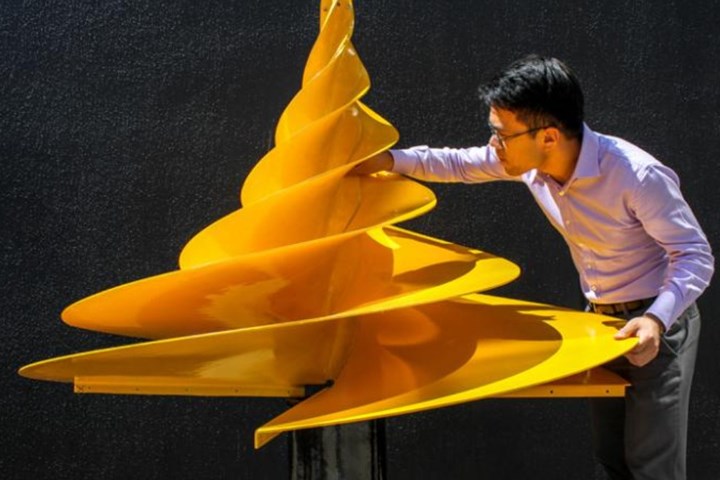Kinetic NRG, ACS-A design composite hydro-electric turbine blade
The 1.5-meter composite blade will enable Kinetic NRG’s hydro-electric generator to generate power in Australian channels and streams at flow rates of two meters per second.

Photo Credit: ACS-A
Renewable energy company Kinetic NRG (Southport, Australia) reports that it collaborated with ACS-A (Melbourne, Australia) to design and manufacture a composite hydro-electric turbine blade for the company’s hydro-kinetic energy generator. According to Kinetic NRG, using composites enabled a cost-effective and lightweight solution when compared with the previous metallic turbine blade design. Further, a new method to manufacture the turbine assembly — a low-cost composite tooling — was designed and fabricated in order to achieve the turbine blade’s complex-shaped geometry.
According to the company, the blade’s sub-components were manufactured and, using a specially designed assembly fixture, were then laminated together producing a single-piece, dimensionally-accurate, complex blade assembly with integrated internal hub for the central drive shaft. Kinetic NRG says finishing of the part included a marine top-coat and rotational balancing of the turbine blade. According to ACS-A, the 1.5-meter composite turbine can generate 30 kilowatts (KW) at flow rates of two meters per second.
The finished product has allowed Kinetic NRG to complete assembly of its hydro-kinetic energy generator prototype for in-water trials. The company adds that its prototype will now present an opportunity in untapped low-head hydro energy to generate power in Australian channels and streams.
Related Content
-
Optimized approach to predict delamination failure in CFRTP structures
ARRK Engineering and Mitsui Chemicals improved delamination prediction accuracy to help optimize absorbed energy/failure load for an overmolded TAFNEX CF/PP UD tape bumper beam.
-
Plant tour: BeSpline/Addcomp, Sherbrooke, QC, Canada
Composites automation specialist increases access to next-gen technologies, including novel AFP systems and unique 3D parts using adaptive molds.
-
Active core molding: A new way to make composite parts
Koridion expandable material is combined with induction-heated molds to make high-quality, complex-shaped parts in minutes with 40% less material and 90% less energy, unlocking new possibilities in design and production.












